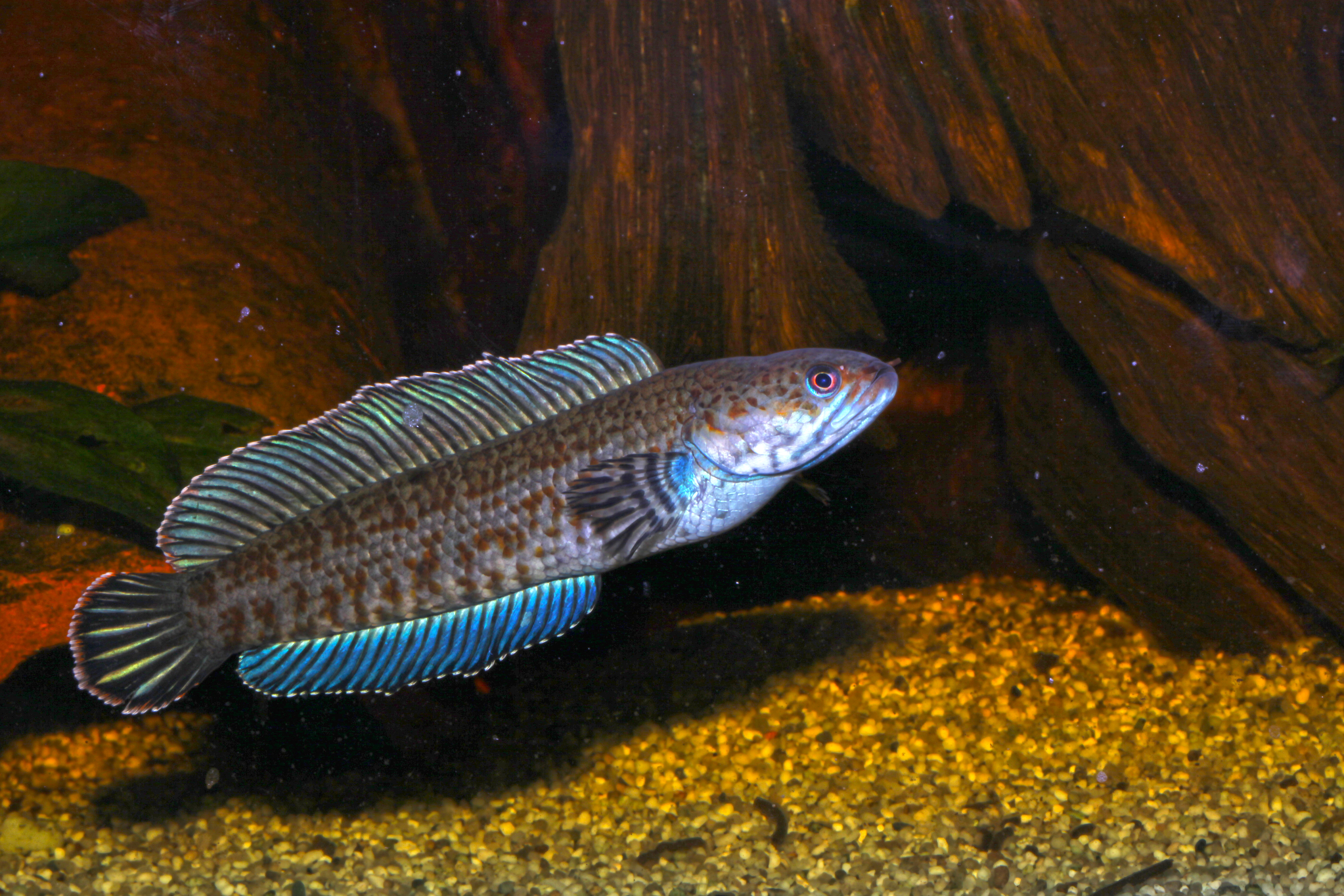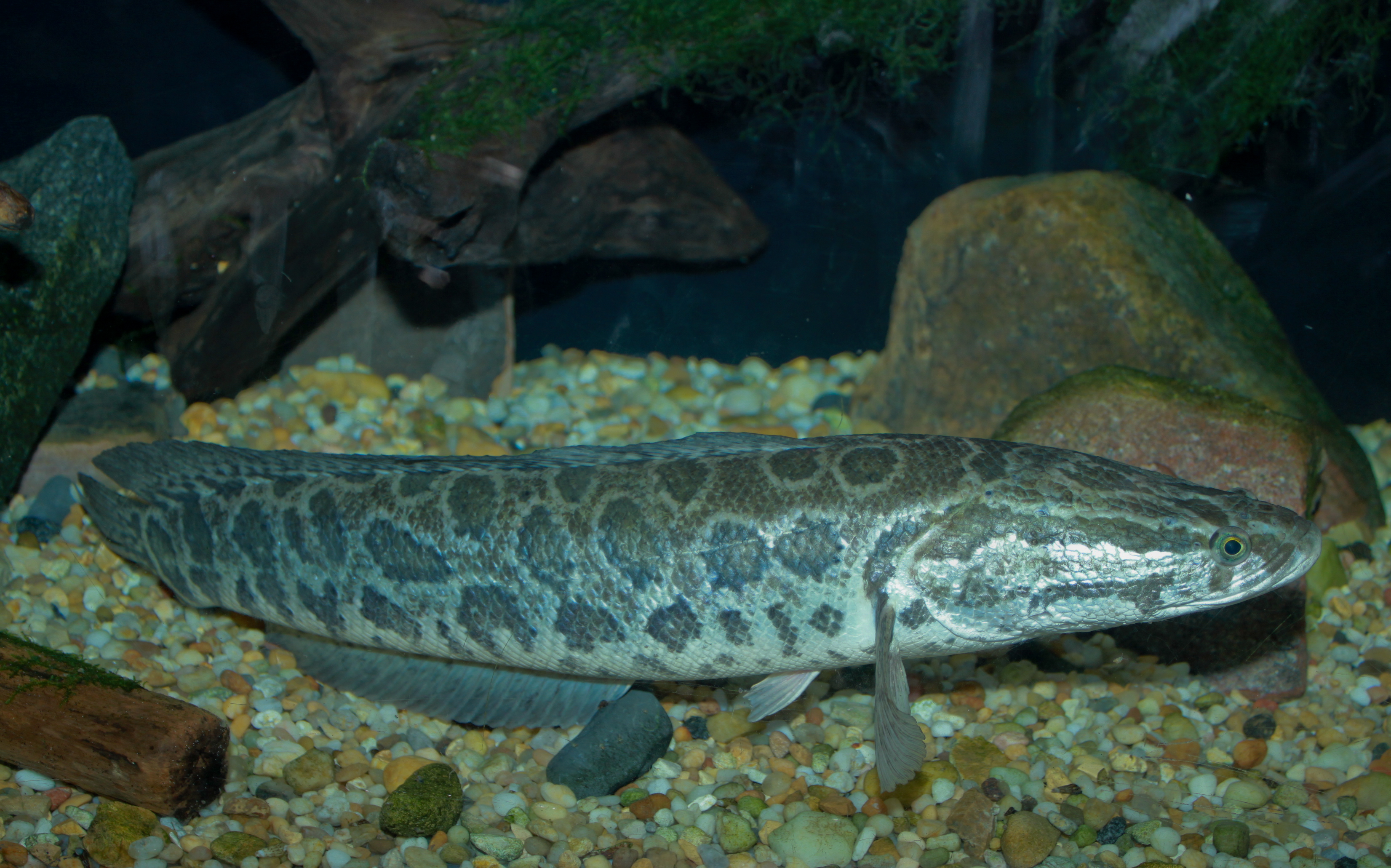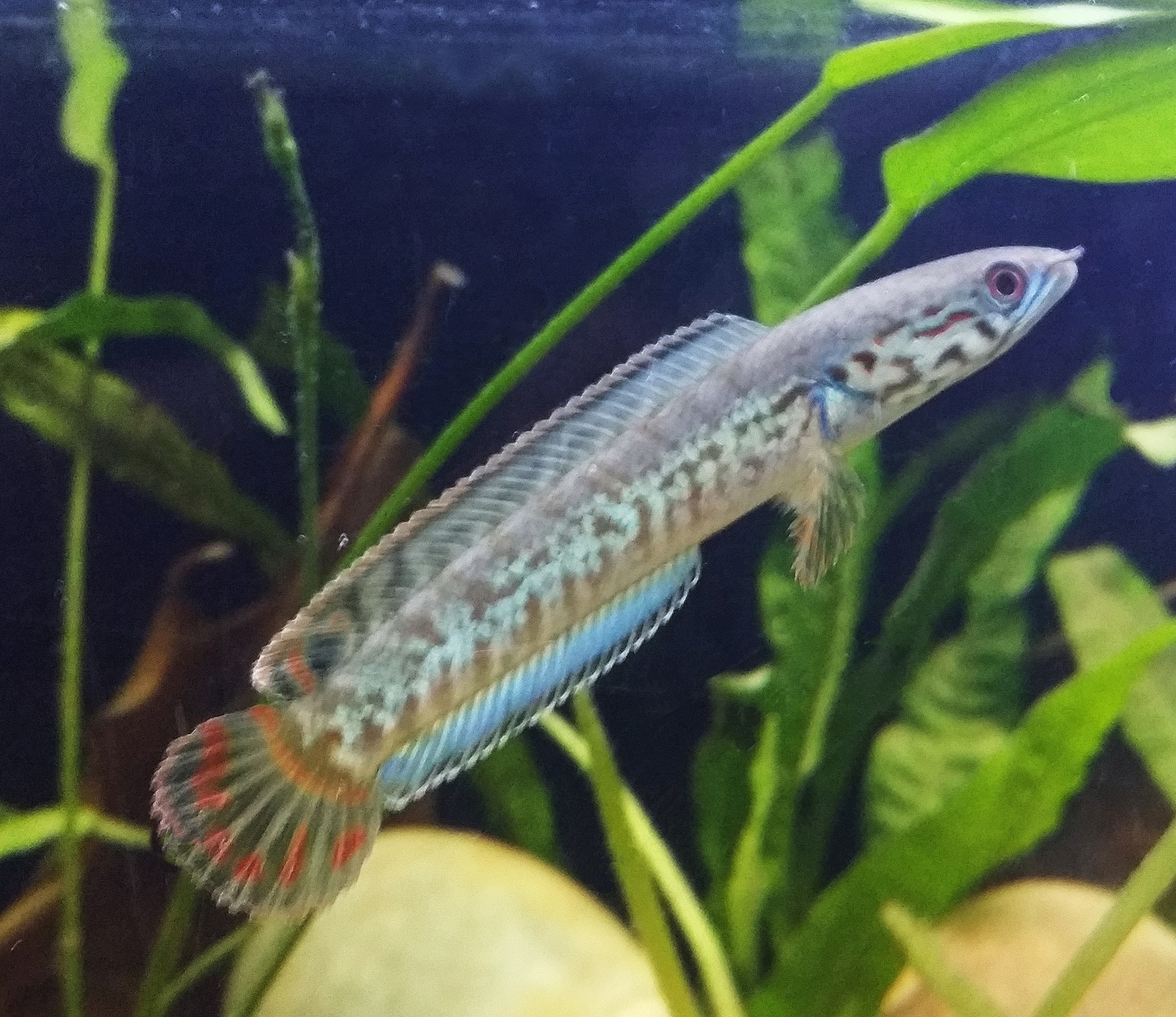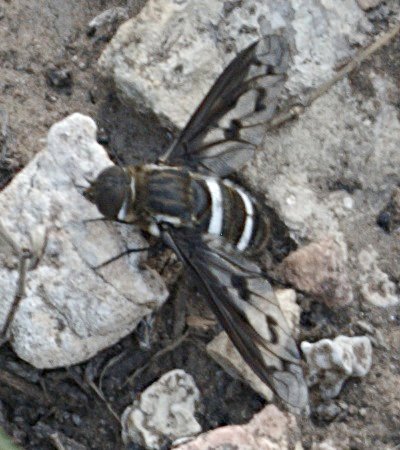|
Channa
''Channa'' is a genus of predatory fish in the family Channidae, commonly known as snakeheads, native to freshwater habitats in Asia. This genus contains about 50 scientifically described species. The genus has a wide natural distribution extending from Iraq in the west, to Indonesia and China in the east, and parts of Siberia in the Far East. A particularly high richness of species exists in Myanmar (Burma) and northeastern India, and many ''Channa'' species live nowhere else. In contrast, a few widespread species have been introduced to several regions outside their natural range, where they often become invasive. The large and medium-sized ''Channa'' species are among the most common staple food fish in several Asian countries, and they are extensively cultured.Kumar, K., R. Kumar, S. Saurabh, M. Sahoo, A.K. Mohanty, P.L. Lalrinsanga, U.L. Mohanty and P. Jayasankar (2012). Snakehead Fishes: Fact Sheets. Central Institute of Freshwater Aquaculture, Bhubaneswar. Apart from th ... [...More Info...] [...Related Items...] OR: [Wikipedia] [Google] [Baidu] |
Channa Andrao Im Aquarium
''Channa'' is a genus of predatory fish in the Family (biology), family Channidae, commonly known as snakeheads, native to freshwater habitats in Asia. This genus contains about 50 Binomial nomenclature, scientifically described species. The genus has a wide natural distribution extending from Iraq in the west, to Indonesia and China in the east, and parts of Siberia in the Far East. A particularly high Species richness, richness of species exists in Myanmar (Burma) and northeastern India, and many ''Channa'' species live nowhere else. In contrast, a few widespread species have been Introduced species, introduced to several regions outside their natural range, where they often become Invasive species, invasive. The large and medium-sized ''Channa'' species are among the most common staple food fish in several Asian countries, and they are extensively Fish farming, cultured.Kumar, K., R. Kumar, S. Saurabh, M. Sahoo, A.K. Mohanty, P.L. Lalrinsanga, U.L. Mohanty and P. Jayasankar (20 ... [...More Info...] [...Related Items...] OR: [Wikipedia] [Google] [Baidu] |
Dwarf Snakehead
Dwarf snakehead is a term coined by aquarists to describe a group of ''Channa'' snakehead fishes growing to about maximum. They are found in freshwater habitats (often streams) in South and Southeast Asia, and southern China.Endruweit, M. (2017). Description of a new dwarf snakehead (Perciformes: Channidae) from western Yunnan. Vertebrate Zoology 67(2): 173-178. The following snakeheads belong to this group:Lalramliana, J. D. M. Knight, D. V. Lalhlimpuia and M. Singh (2018). Integrative taxonomy reveals a new species of snakehead fish, Channa stiktos (Teleostei: Channidae), from Mizoram, North Eastern India. Vertebrate Zoology 68 (2): 165-175. *''Channa andrao'' *''Channa aurantipectoralis'' *'' Channa baramensis'' *''Channa bipuli'' *''Channa bleheri'' *'' Channa brunnea'' *'' Channa burmanica'' *'' Channa gachua'' *''Channa harcourtbutleri'' *''Channa kelaartii'' *''Channa limbata'' *''Channa lipor'' *'' Channa melanostigma'' *''Channa orientalis'' *''Channa ornatipinnis'' *'' ... [...More Info...] [...Related Items...] OR: [Wikipedia] [Google] [Baidu] |
Channa Micropeltes
''Channa micropeltes'', giant snakehead, giant mudfish or toman harimau, is among the largest species in the family Channidae, capable of growing to in length and a weight of . It is native to the fresh waters of Southeast Asia (South Indian populations are now regarded as a separate species, ''Malabar snakehead, C. diplogramma''),Benziger A, Philip S, Raghavan R, Anvar Ali PH, Sukumaran M, et al. (2011). ''Unraveling a 146 Years Old Taxonomic Puzzle: Validation of Malabar Snakehead, Species-Status and Its Relevance for Channid Systematics and Evolution.'' PLoS ONE 6(6): e21272 but has also been Introduced species, introduced elsewhere and is considered Invasive species, invasive in Taiwan. Other names include ''xal mas'' (শাল মাছ) in Assamese language, Assamese, red snakehead, redline snakehead, and ''ikan toman'' (where ''ikan'' is fish in Malay Language, Malay and Indonesian language, Indonesian). Biology The young of the ''C.micropeltes'' are red in color, with oran ... [...More Info...] [...Related Items...] OR: [Wikipedia] [Google] [Baidu] |
Channidae
The snakeheads are members of the freshwater perciform fish family Channidae, native to parts of Africa and Asia. These elongated, predatory fish are distinguished by their long dorsal fins, large mouths, and shiny teeth. They breathe air with gills, which allows them to migrate short distances over land. They have suprabranchial organs, which are primitive forms of labyrinth organs, that develop when they grow older. The two extant genera are ''Channa'' in Asia and ''Parachanna'' in Africa, consisting of more than 50 species. They are valuable as a food source and have become notorious as an intentionally released invasive species. These fish have been kept as pets but as they get larger, people let them go into ponds, lakes, and rivers, making these fish invasive. Description The various species of snakeheads differ greatly in size; dwarf snakeheads, such as ''Channa orientalis'', do not surpass in length. Most other snakeheads reach between . Five species ('' C. argus'' ... [...More Info...] [...Related Items...] OR: [Wikipedia] [Google] [Baidu] |
Barca Snakehead
The Barca snakehead (''Channa barca'') is a rare species of snakehead. It is endemic to the upper Brahmaputra river basin in northeastern India and Bangladesh. Records from Nepal are of doubtful validity. Overall it has been assessed as data deficient by the IUCN, and in 2014 it was assessed as critically endangered in Bangladesh by the IUCN. In Assam, it is locally known as ''cheng garaka'' or ''garaka cheng''. This is a relatively large snakehead, reaching a total length of up to . The species is regarded as an excellent food fish, and it is also highly desired by aquarists, but its rarity, behavior and large size makes it unsuitable for most aquariums.SeriouslyFishChanna barca Retrieved 14 February 2019. Distribution, habitat and behavior The barca snakehead is only known from the upper Brahmaputra river basin the Assam and Nagaland in India, and Sylhet in Bangladesh. Records from Nepal are of doubtful validity. It mostly inhabits wetlands, often near the margins, but ... [...More Info...] [...Related Items...] OR: [Wikipedia] [Google] [Baidu] |
Channa Bleheri
''Channa bleheri'' (the rainbow snakehead) is a species of dwarf snakehead that is endemic to the Brahmaputra River basin in the Indian states of Assam and Arunachal Pradesh.SeriouslyFishChanna bleheri Retrieved 11 February 2019. It is among the most colorful species of snakehead. Distribution and etymology In the wild, this species primarily inhabits waters within the Indian state of Assam, and it is known in Assamese as ''sengeli'' or ''chengeli''. Its binomial name honors the explorer Heiko Bleher. The specific name of this fish honours the explorer and exotic fish trader Heiko Bleher who assisted in the collection of the type and gave it to Vierke. Endemic to the Brahmaputra River basin, this fish has a type location at Dibrugarh, a city in the northeastern part of Assam.Courtenay, Walter and Williams, James. ''Snakeheads (Pisces, Channidae): A Biological Synopsis and Risk Assessment''p. 63(U.S. Department of the Interior, U.S. Geological Survey, Jan 1, 2004). Its clo ... [...More Info...] [...Related Items...] OR: [Wikipedia] [Google] [Baidu] |
Mouthbrooding
Mouthbrooding, also known as oral incubation and buccal incubation, is the care given by some groups of animals to their offspring by holding them in the mouth of the parent for extended periods of time. Although mouthbrooding is performed by a variety of different animals, such as the Darwin's frog, fish are by far the most diverse mouthbrooders. Mouthbrooding has evolved independently in several different families of fish. Mouthbrooding behaviour Paternal mouthbrooders are species where the male looks after the eggs. Paternal mouthbrooders include the arowana, various mouthbrooding bettas and gouramies such as ''Betta pugnax'', and sea catfish such as ''Ariopsis felis''. Among cichlids, paternal mouthbrooding is relatively rare, but is found among some of the tilapiines, most notably the black-chin tilapia ''Sarotherodon melanotheron''. In the case of the maternal mouthbrooders, the female takes the eggs. Maternal mouthbrooders are found among both African and South American ci ... [...More Info...] [...Related Items...] OR: [Wikipedia] [Google] [Baidu] |
Genus
Genus ( plural genera ) is a taxonomic rank used in the biological classification of extant taxon, living and fossil organisms as well as Virus classification#ICTV classification, viruses. In the hierarchy of biological classification, genus comes above species and below family (taxonomy), family. In binomial nomenclature, the genus name forms the first part of the binomial species name for each species within the genus. :E.g. ''Panthera leo'' (lion) and ''Panthera onca'' (jaguar) are two species within the genus ''Panthera''. ''Panthera'' is a genus within the family Felidae. The composition of a genus is determined by taxonomy (biology), taxonomists. The standards for genus classification are not strictly codified, so different authorities often produce different classifications for genera. There are some general practices used, however, including the idea that a newly defined genus should fulfill these three criteria to be descriptively useful: # monophyly – all descendants ... [...More Info...] [...Related Items...] OR: [Wikipedia] [Google] [Baidu] |
Labyrinth Organ
The Anabantoidei are a suborder of anabantiform ray-finned freshwater fish distinguished by their possession of a lung-like labyrinth organ, which enables them to breathe air. The fish in the Anabantoidei suborder are known as anabantoids or labyrinth fish, or colloquially as gouramies. Some labyrinth fish are important food fish, and many others, such as the Siamese fighting fish and paradise fish, are popular as aquarium fish. Labyrinth organ The labyrinth organ, a defining characteristic of fish in the suborder Anabantoidei, is a much-folded supra branchial accessory breathing organ. It is formed by vascularized expansion of the epibranchial bone of the first gill arch and used for respiration in air.Pinter, H. (1986). Labyrinth Fish. Barron's Educational Series, Inc., This organ allows labyrinth fish to take in oxygen directly from the air, instead of taking it from the water in which they reside through use of gills. The labyrinth organ helps the inhaled oxygen to be abs ... [...More Info...] [...Related Items...] OR: [Wikipedia] [Google] [Baidu] |
Parachanna
''Parachanna'' is a genus of snakeheads native to freshwater habitats in tropical Africa. Three recognized extant (living) species are in this genus, but a phylogenetic study from 2017 indicates that a fourth, currently undescribed species also exists. One fossil species, ''Parachanna fayumensis'' Murray, 2006 dated to the Upper Eocene and Lower Oligocene is known from the Jebel Qatrani Formation of the Fayum Depression, Egypt. Species The three recognized extant species in this genus are: * ''Parachanna africana'' ( Steindachner, 1879) (African snakehead) * ''Parachanna insignis'' ( Sauvage, 1884) (brown snakehead) * ''Parachanna obscura The obscure snakehead, ''Parachanna obscura'', is a medium-sized carnivorous fish that has an elongated shape tapered on both ends and is covered in medium circular scales (cycloid). The head, resembling a snake, is long and depressed anteriorly ...'' ( Günther, 1861) (obscure snakehead) References * Freshwater fish genera Tax ... [...More Info...] [...Related Items...] OR: [Wikipedia] [Google] [Baidu] |
Undescribed Species
In taxonomy, an undescribed taxon is a taxon (for example, a species) that has been discovered, but not yet formally described and named. The various Nomenclature Codes specify the requirements for a new taxon to be validly described and named. Until such a description has been published, the taxon has no formal or official name, although a temporary, informal name is often used. A published scientific name may not fulfil the requirements of the Codes for various reasons. For example, if the taxon was not adequately described, its name is called a '' nomen nudum''. It is possible for a taxon to be "undescribed" for an extensive period of time, even if unofficial descriptions are published. An undescribed species may be referred to with the genus name, followed by "sp"., but this abbreviation is also used to label specimens or images that are too incomplete to be identified at the species level. In some cases, there is more than one undescribed species in a genus. In this case, ... [...More Info...] [...Related Items...] OR: [Wikipedia] [Google] [Baidu] |
Phylogenetic
In biology, phylogenetics (; from Greek φυλή/ φῦλον [] "tribe, clan, race", and wikt:γενετικός, γενετικός [] "origin, source, birth") is the study of the evolutionary history and relationships among or within groups of organisms. These relationships are determined by Computational phylogenetics, phylogenetic inference methods that focus on observed heritable traits, such as DNA sequences, protein amino acid sequences, or morphology. The result of such an analysis is a phylogenetic tree—a diagram containing a hypothesis of relationships that reflects the evolutionary history of a group of organisms. The tips of a phylogenetic tree can be living taxa or fossils, and represent the "end" or the present time in an evolutionary lineage. A phylogenetic diagram can be rooted or unrooted. A rooted tree diagram indicates the hypothetical common ancestor of the tree. An unrooted tree diagram (a network) makes no assumption about the ancestral line, and does ... [...More Info...] [...Related Items...] OR: [Wikipedia] [Google] [Baidu] |









